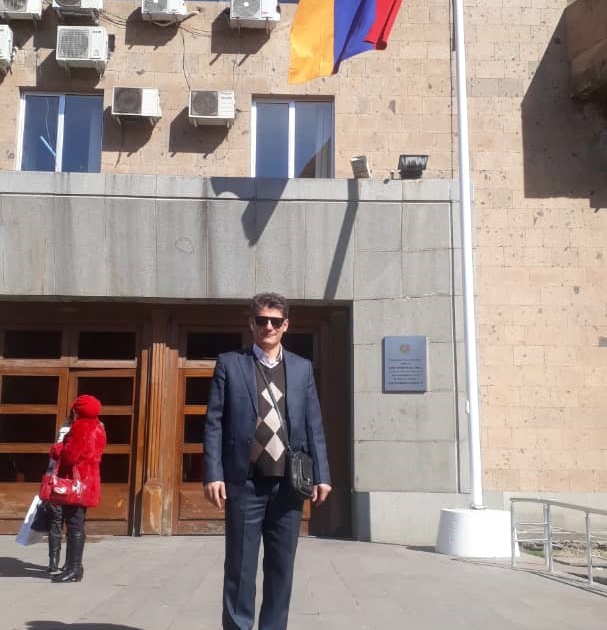Fish farming in Armenia
History
Before discussing the history of fish farming in Armenia, it is better to get acquainted with this country. Armenia is a borderless country with an area of 29,800 square kilometers with limited natural resources. The country is divided into two main areas; Arak basin in the southwest and Kori basin in the northeast. The Black Sea cannot be reached without crossing the territory of Georgia and Turkey.
Hundreds of water resources are flowing in this country, including 10 main natural lakes, 15 main rivers and 5 aqueducts. Fish farming in Armenia and fishing from these waters are an important element in Armenia’s food supply. The largest source of water and fish farming in Armenia is the water of Swan Lake, which is located approximately 924 meters above sea level. The water of this lake is supplied by 28 streams but has only a single outlet. Various species of fish such as swan salmon, whitefish, carp and rainbow trout are raised in the lake.
Swan Lake trout is in great demand not only in Armenia but also in the Russian Federation and elsewhere. However, Swan Lake trout are endangered due to overfishing and serious measures are needed to save the species.
According to the National Bureau of Investigation, there are about 142 legal entities engaged in fish farming in Armenia. Various sources have stated that the number of fish farms in this country is about 200 farms, of which 70 are permanently active. Also, the production capacity of active fish farms in this country varies from 5 to 100 tons per year.
Commercial fish farming in Armenia began in the 1950s in the Swan Lake area with the construction of small and large ponds for salmon and kogan. The second development was the construction of pond farms to produce fish table, mainly carp (common, large cattle, silver) and salmon. Fish farms in Armenia in the second stage of development were larger than in the first stage of development, usually hundreds of hectares and more.
Usually, water from fish farms in Armenia was pumped from rivers. In the 1980s, contaminants reduced wild fish catch and, in some cases, negatively affected fish health in ponds. However, during this period, chang farms produced up to 6,000 tons of fish a year.
Although most state-owned fish farms in Armenia are built in the Ararat Valley, we are seeing the spread of these farms to other areas, such as Jermuk and Harazdan. Water wells with a depth of 50 to 250 meters in these areas can provide high quality water to these farms throughout the year, with a constant temperature of 15-15 degrees Celsius and a constant flow.
Summary of the history of fish farming in Armenia It should be said that the country has long made fish farming in rivers and lakes its economic priorities. Most of the income of an Armenian citizen working in this field is obtained through fish farming.
Unlike the Western European method, fish farms in Armenia do not have any mechanical fish sorting system, but sample the fish manually. Many carp in the Yerevan market appear to be due to fishing in the country’s lakes and rivers. Some Armenian farmers produce salmon and carp in ponds along the edge of their fields.
Current conditions of fish farming in Armenia?
With the progress that has been made in the field of fish farming in Armenia, the fish farming industry in this country has gone from the traditional state to modernity. Up-to-date and modern equipment has replaced traditional equipment. In the last two years, the culture of producing Swan trout in controlled conditions has been provided for many breeders.
This is why significant progress has been made in recent years in fish farming in Armenia, due to improved management practices, the development of fish feed and the selection of fish with good genetic potential.
Although Armenia is a borderless country, it has great potential for fish farming due to its rivers, canals, lakes, reservoirs and, most importantly, its groundwater.
Armenia has the best position in the region for access to EU markets; But in order to achieve it, not only must it take the necessary measures to reform the fish farming and aquaculture sector, but it must also try to adapt these measures to the current economic and social conditions of its country.
Armenia’s fish farming industry can make a significant contribution to the country’s economy. The limited resources of agricultural lands increase the need to use more natural resources, such as the fish farming industry in Armenia. That is why the culture of fish farming should be important in this country. In general, the weather conditions are favorable enough for fish farming in surface waters in this country. The use of groundwater for the production of various species of salmon and sturgeon is available in this country and breeders can easily use this potential.
Surface and groundwater are resources that are used extensively in Armenia. The development of the fish farming industry in Armenia in recent years shows that a wide range of fish producers in this country have not been able to make good use of the experiences of previous years.
Fisheries and fish farming in Armenia are also of great strategic importance, because they are not only in the plains but also in the foothills and even mountainous areas, especially in the villages near the border (where fishing and fish farming is the only profitable activity). They are doing this. Fish farming in Armenia is also profitable.
Over the past 90 years, there has been extensive experience in fish farming in Armenia, mainly in the field of artificial reproduction of salmon Swan; The result is an annual production of about 7 million salmon, about 100 million Swan persimmon larvae and 20 million white swan larvae.
Behrooz Fard, Fisheries Analyst and Complicator






